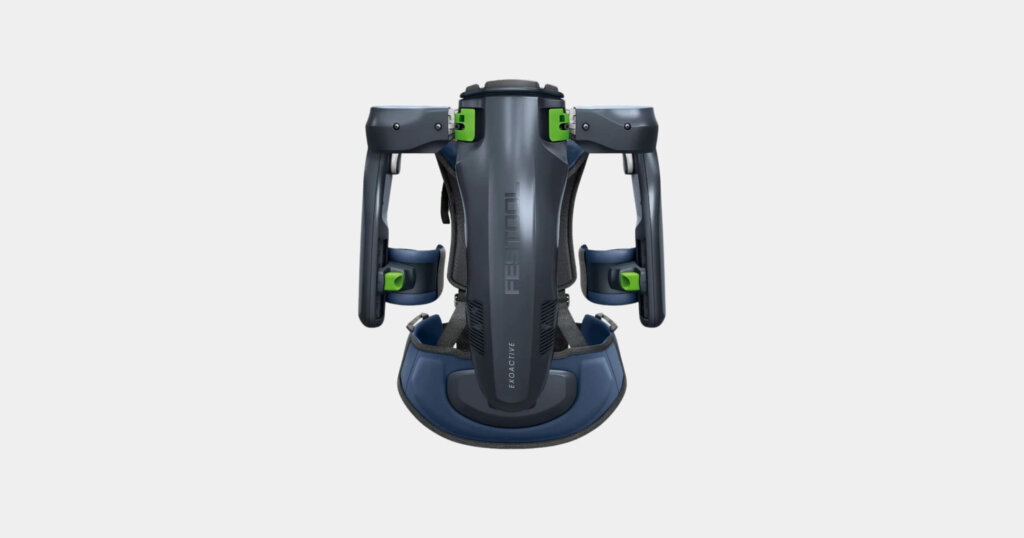In physically demanding fields like construction, architecture, and engineering, professionals often face the challenge of prolonged overhead work leading to fatigue and potential injuries. Festool’s ExoActive exoskeleton aims to address this issue by providing active support to reduce strain during such tasks.
Design and functionality
The ExoActive is an active exoskeleton powered by an 18-volt battery pack, similar to those used in Festool’s other tools. This battery drives a compressor that powers pneumatic cylinders, delivering up to 50 Newtons (approximately 5 kg) of assistance per underarm. This support is particularly beneficial for tasks involving extended periods of overhead work, such as sanding, painting, or installing fixtures.

Users can customize the level of support through a remote control, selecting from five performance levels and three working areas: from the waist up, from the chest up, or overhead. Designed with ergonomics in mind, the ExoActive is worn like a backpack and can be quickly adjusted to fit different body sizes. Its components allow for freedom of movement, allowing users to perform tasks like picking up tools or mixing materials without restriction.
Cost considerations
The Festool ExoActive exoskeleton is currently listed at $4,495 on the Festool Canada website. This puts it firmly in the premium tier of wearable assistive tools, reflecting its powered support system and professional-grade design. While that price may be steep for smaller contractors or individual tradespeople, larger firms or specialists in overhead work might find the investment worthwhile. Anyone considering the ExoActive should weigh the cost against potential long-term savings in reduced fatigue, fewer injuries, and increased productivity.
User feedback and effectiveness
Prior to its market release in October 2023, Festool conducted an extensive test study involving 300 professionals across seven European countries. The feedback was overwhelmingly positive, with users highlighting the exoskeleton’s ability to reduce physical fatigue and decrease the need for frequent breaks.
For instance, Maciej Hyd from Poland noted that the ExoActive is indispensable for tasks like sanding walls and ceilings, making such work more efficient and less tiring. Similarly, Karl Preiser from Germany emphasized the health benefits, stating that the exoskeleton helps keep you motivated on the job. In the UK, painter and decorator Melanie Freywald reported that the ExoActive allowed her to work longer without shoulder and arm fatigue, particularly appreciating its support during ceiling work.

Is it worth the investment?
Determining the value of the ExoActive exoskeleton depends on several factors, including the nature and frequency of overhead work, budget constraints, and the prioritization of worker health and safety. For those who regularly engage in tasks that involve prolonged arm elevation, the ExoActive offers benefits that can lead to increased productivity and reduced risk of musculoskeletal injuries.
While the initial cost may be considerable, investing in such technology can result in long-term savings by potentially decreasing injury-related downtime and associated healthcare costs.
That said, for workers that experience a variety of working positions throughout the day, the exoskeleton will feel more like a burden. Its size can get in the way of your mobility, especially if you’re working in tight spaces. Unless you’re lifting heavy objects regularly or working overhead it doesn’t provide enough benefits to warrant spending money on it.
Bottom line
The Festool ExoActive exoskeleton can support professionals in physically demanding trades that work overhead. Its thoughtful design, customizable support, and positive user feedback suggest that it is a valuable tool for those seeking to improve working conditions during strenuous tasks.
For more insights on innovations in construction and related industries, consider subscribing to our newsletter at https://underthehardhat.org/join-us/.



